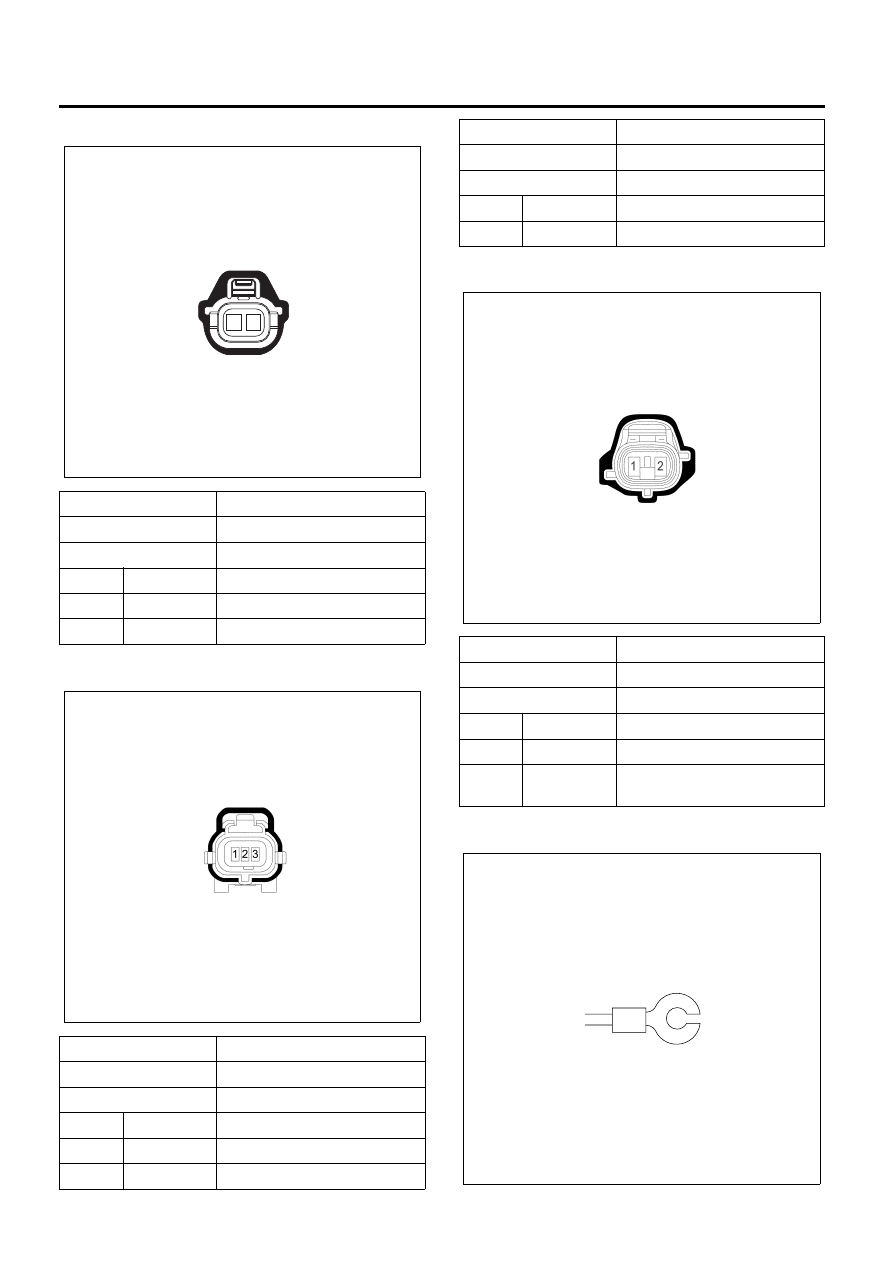Isuzu N-Series. Service manual - part 654

6E-38 Engine Control System (4HK1)
Fuel Rail Pressure (FRP) Regulator
Fuel Rail Pressure (FRP) Sensor
Fuel Temperature (FT) Sensor
Glow Plug
Connector No.
E-116
Connector Color
Gray
Test Adapter No.
J-35616-33
Pin
Wire Color
Pin Function
1
WHT/RED
FRP Regulator High Control
2
GRN/RED
FRP Regulator Low Control
Connector No.
E-113
Connector Color
Black
Test Adapter No.
J-35616-64A
Pin
Wire Color
Pin Function
1
BRN
FRP Sensor Low Reference
2
WHT
FRP Sensor Signal
1
2
N6A6455E
N6A6555E
3
GRN/BLU
FRP Sensor 5 Volts Reference
Connector No.
E-93
Connector Color
Green
Test Adapter No.
J-35616-64A
Pin
Wire Color
Pin Function
1
BLK
FT Sensor Low Reference
2
LT GRN/
WHT
FT Sensor Signal
Connector No.
E-113
Connector Color
Black
Test Adapter No.
J-35616-64A
Pin
Wire Color
Pin Function
N6A6556E
N6A3809E